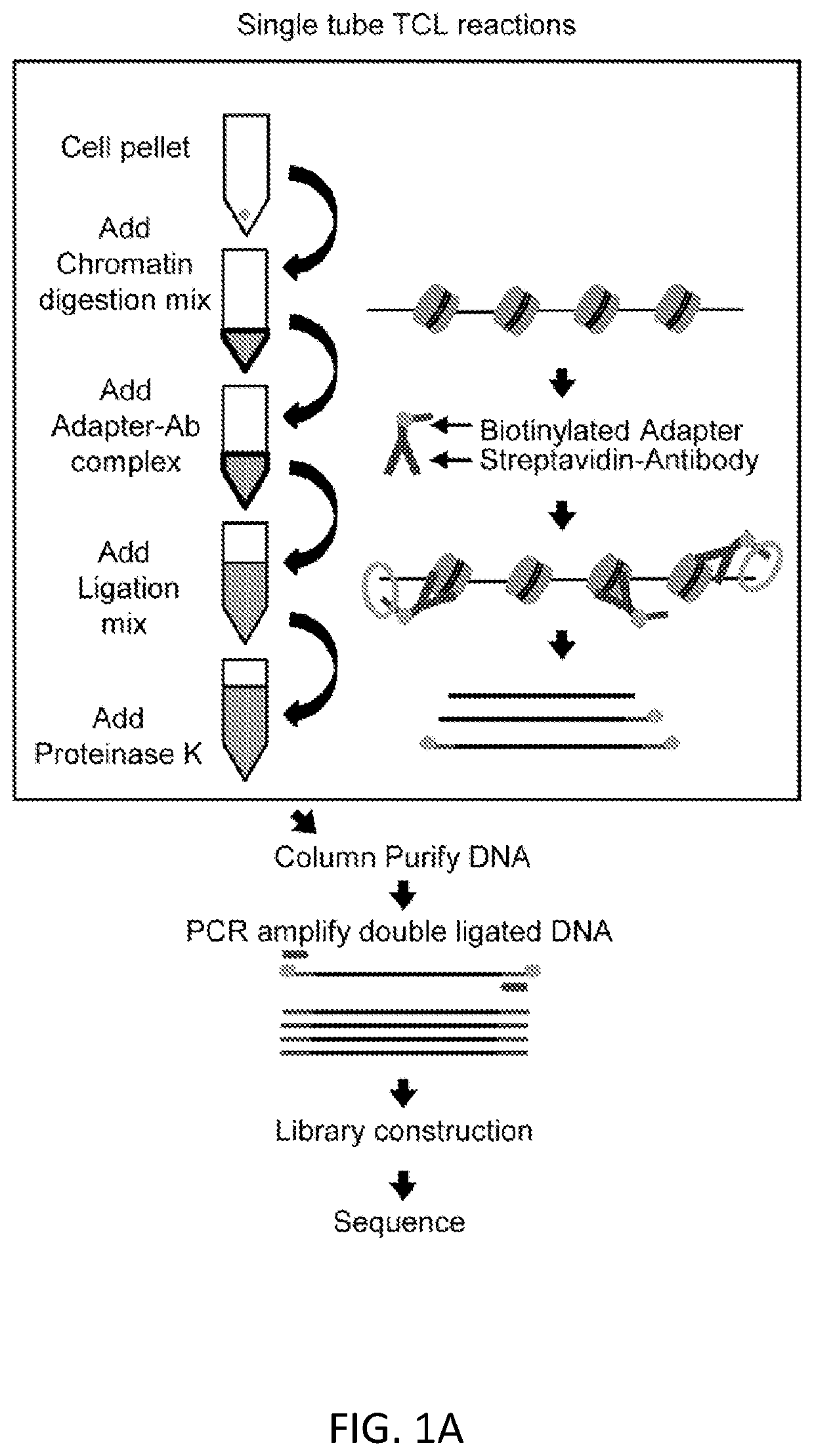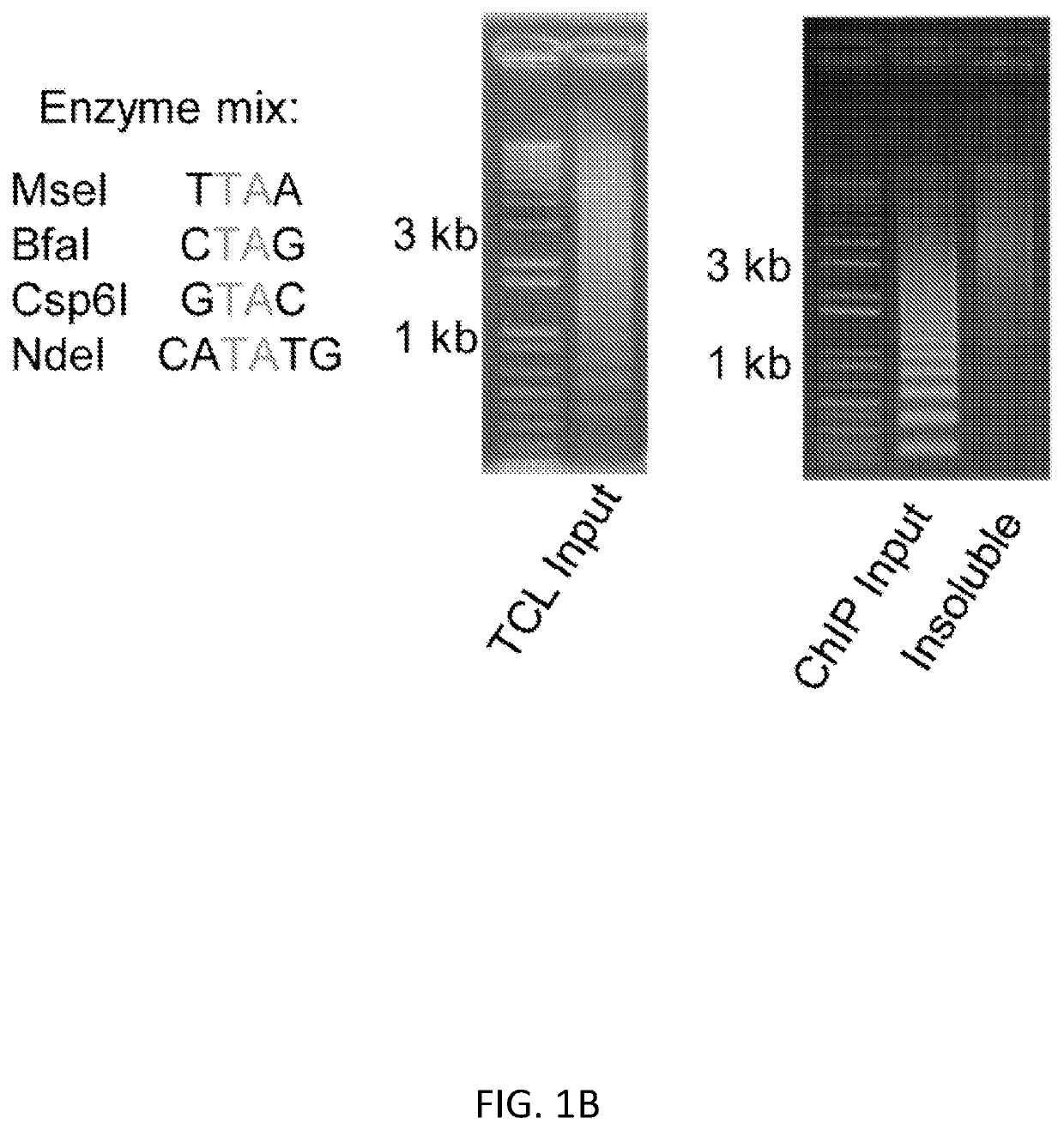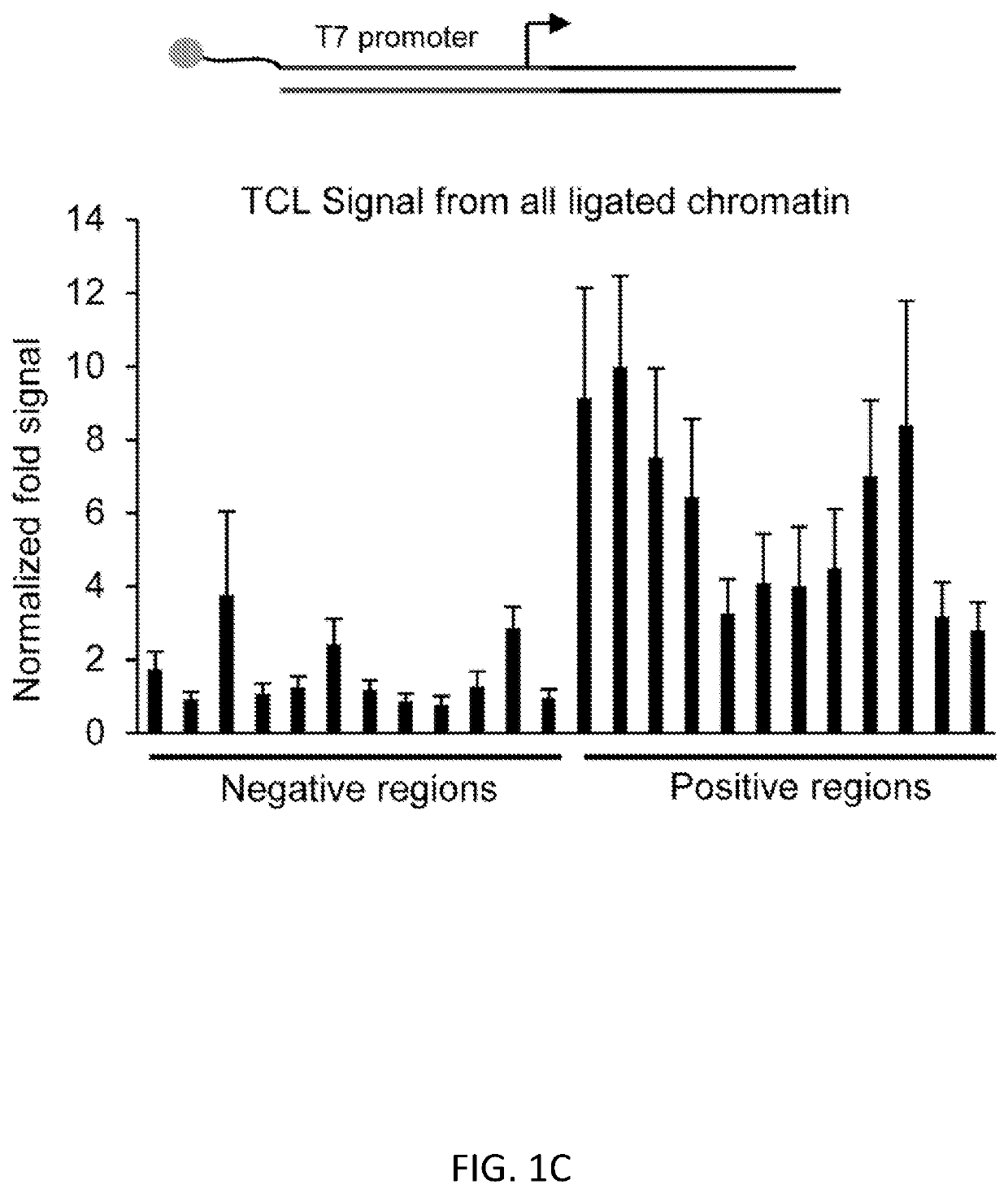Epigenetic profiling using targeted chromatin ligation
- Summary
- Abstract
- Description
- Claims
- Application Information
AI Technical Summary
Benefits of technology
Problems solved by technology
Method used
Image
Examples
example 1
Targeted Chromatin Ligation, A Robust Epigenetic Profiling Technique for Small Cell Numbers
INTRODUCTION
[0099]For epigenetic investigations of rare cell populations to be routinely performed by researchers of variable skill levels, without expensive and complicated devices and procedures, we have developed a new technique for profiling epigenetic landscapes that enhances sensitivity and simplifies the workflow.
[0100]We present a simple, novel, bead-free approach for detecting genome-wide histone modification patterns using targeted chromatin ligation (TCL). Our strategy uses proximity ligation of antibody bound adapter, followed by selective amplification of ligated chromatin to enhance the signal relative to background. Our approach utilizes a simple chromatin fragmentation strategy, eliminates the need for bead-based immunoprecipitation and washing, and purifies all DNA, allowing unligated nucleotides to provide a carrier effect instead of using additional material. The entire proc...
example 2
Variation of the Targeted Chromatin Ligation Protocol without Column Purification
[0136]In our original iteration of TCL, described in Example 1 (schematic shown in FIG. 1A), a Targeted Chromatin Ligation reaction was described for use with 200-2000 cells, performed in a tube. That protocol incorporated a column purification step, which was used to clean up DNA for subsequent PCR amplification. However, that purification step reduces throughput, limits automation, and reduces sensitivity.
[0137]To enable maximum sensitivity of TCL, and to allow for automation and higher throughput, we successfully optimized TCL to remove the column cleanup step and to reduce total volumes needed to perform the TCL reaction (FIGS. 6A-6C). TCL reactions can now be performed in 1 / 10 the volume with all steps through PCR amplification being performed without changing tubes / wells. We have shown that the new protocol works effectively with as few as 25 cells, versus the 200 cells we reported previously, and...
PUM
| Property | Measurement | Unit |
|---|---|---|
| Size | aaaaa | aaaaa |
| Plasma power | aaaaa | aaaaa |
Abstract
Description
Claims
Application Information
 Login to View More
Login to View More - R&D
- Intellectual Property
- Life Sciences
- Materials
- Tech Scout
- Unparalleled Data Quality
- Higher Quality Content
- 60% Fewer Hallucinations
Browse by: Latest US Patents, China's latest patents, Technical Efficacy Thesaurus, Application Domain, Technology Topic, Popular Technical Reports.
© 2025 PatSnap. All rights reserved.Legal|Privacy policy|Modern Slavery Act Transparency Statement|Sitemap|About US| Contact US: help@patsnap.com



